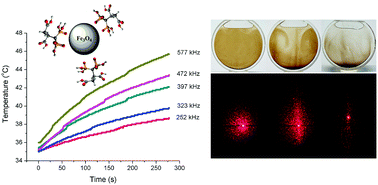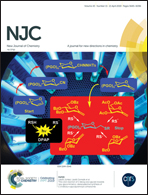The analysis of 2,3-dicarboxypropane-1,1-diphosphonic acid-coated magnetite nanoparticles under an external magnetic field and their radiolabeling for possible theranostic applications
Abstract
The advances in nanotechnology are directed towards the development of new theranostic agents based on magnetic nanoparticles that can be used for both cancer detection and treatment. In this study, 2,3-dicarboxypropane-1,1-diphosphonic acid-coated magnetite nanoparticles (Fe3O4–DPD MNPs) were evaluated for their theranostic application using different methods. The magnetic hyperthermia efficiency of the Fe3O4–DPD MNPs was investigated in saline solution with ionic strengths between 0.05 and 1.0 mol dm−3. For a better understanding of hyperthermia, the behavior of Fe3O4–DPD MNPs under a non-alternating magnetic field was studied, and the transparency of the sample was measured. Furthermore, the radiotracer method using the radionuclides 99mTc and 90Y was applied as a reliable and powerful method for evaluating the in vivo behavior of a nanoprobe; a high radiolabeling yield (>93%), in vitro and in vivo stability of the radiolabeled nanoparticles and high heating effect were observed, thus paving the way for the possible theranostic applications of Fe3O4–DPD MNPs.



 Please wait while we load your content...
Please wait while we load your content...